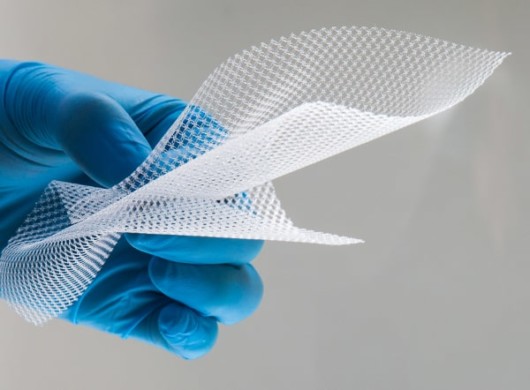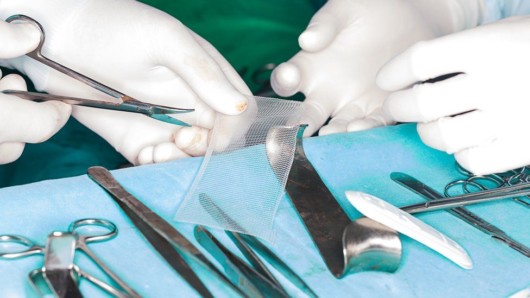A hernia is a common health problem that can happen to everyone, especially when they become older. Most of the time, hernias are caused by a strain or weakness in the muscles and connective tissues that surround the abdomen.
They appear as an external bulge in the body, usually when straining or putting pressure. You may not realize you have a hernia until it’s discovered during a regular physical or a medical test for a different condition. Hernias often go unnoticed because they have no symptoms.
However, the bulge may enlarge over time whereas in some cases like this interesting story, the intestine may get stuck in the sac. When this happen, medical attention is required, and undergoing hernia mesh surgery is needed. Continue reading this article to know more about hernia mesh surgery.
It Is Performed With the Help of a Surgical Mesh
In medical terminology, mesh refers to a sheet of prosthetic material that’s used to patch a hernia. Also known as a surgical mesh, it is used to strengthen damaged tissues and to close a gap inside the injured muscles that allows a hernia to develop. In real-time, the mesh acts as a flexible scaffold. It supports the muscle walls while also preventing other organs from passing through. As a result, it keeps the patient’s condition from developing.

During the operation, the mesh is placed on top of the open hernia by the surgeon. Then the surgeon applies the mesh with sutures, tacks, and surgical glue to keep it in place. Gradually, the patient’s tissue will continue to grow over time into the tiny pores in the mesh, all while repairing the muscle wall.
It Can Be Performed in Two Ways
Hernia mesh surgery can be performed in two ways: laparoscopy and open surgery.
- Laparoscopy – This procedure is minimally invasive. It’s always performed while under general anesthesia. Several tiny incisions are made by the surgeon. Then, surgical tools are inserted into the holes to implant and secure the mesh. Yet, this operation is more difficult to perform and is more costly. Patients usually recover in a week or two and may resume their normal lifestyle.
- Open Surgery– This method is used by surgeons with or without surgical mesh. The majority of open hernia surgeries are performed under general anesthetic. However, depending on the patient’s situation, surgeons may replace spinal or local anesthetic for general anesthesia, together with sedation. The surgeon creates an incision around the hernia to fix the weakening muscle tissue during this surgery. After open repair surgery, patients usually need three weeks to recuperate then they can return to their regular schedule.
Both procedures are permanent, which means the implant will remain in the patient’s body for the remainder of their life. Depending on the type of surgery performed, the procedure itself can take from 30 minutes to two hours.
Different Techniques Are Used in Surgery
Mesh hernia repair can be accomplished using different techniques. Patients have different and specific situations; due to this, surgeons may prefer one over the other. Conversely, they may select a technique with which they’re more accustomed.
- The TAPP Technique – An acronym for Transabdominal Pre-peritoneal, TAPP is a technique surgeons use to access the peritoneum, which is the thin innermost layer of the stomach wall. Then, they insert the surgical mesh through a tiny incision into the right layer of the abdominal wall, avoiding contact with the internal organs.
- The TEP Technique – This means Totally Extra-Peritoneal. The surgeon largely avoids the peritoneal cavity in this form of surgery. TEP surgery is more difficult to execute than TAPP surgery, still, both require the use of surgical mesh. Surgeons typically choose this method because it has fewer problems than TAPP surgery.
- The IPOM Technique – IPOM or the Intraperitoneal On Mesh, the surgeon penetrates the peritoneal cavity to implant a mesh on the peritoneum’s interior and comes into touch with the intestines and other organs. The IPOM approach gained popularity in the 1990s and is easier and faster to execute than both TAPP and TEP.
The Operation May Fail and Have Side Effects
Hernia mesh surgery, as well as other operations, may not go smoothly as it should. Some mesh types are subject to failure, which causes side effects. High temperature, flu symptoms, nausea, vomiting, soreness, bruises, swelling, and stool issues, as well as difficulty in urinating, are all markers of mesh failure. In addition, mesh migration and mesh shrinkage are two more possible complications that might emerge after mesh hernia surgery.

If you’re experiencing such symptoms after surgery, see your doctor.
Final Thoughts
As you can see, surgeons use surgical mesh comprised of plastic or biological materials to keep protruding tissue or organs in place during a hernia mesh surgery. When surgeons employ hernia mesh, the chances of the hernia recurring are reduced. However, like other kinds of operations, side effects may occur after the surgery.



